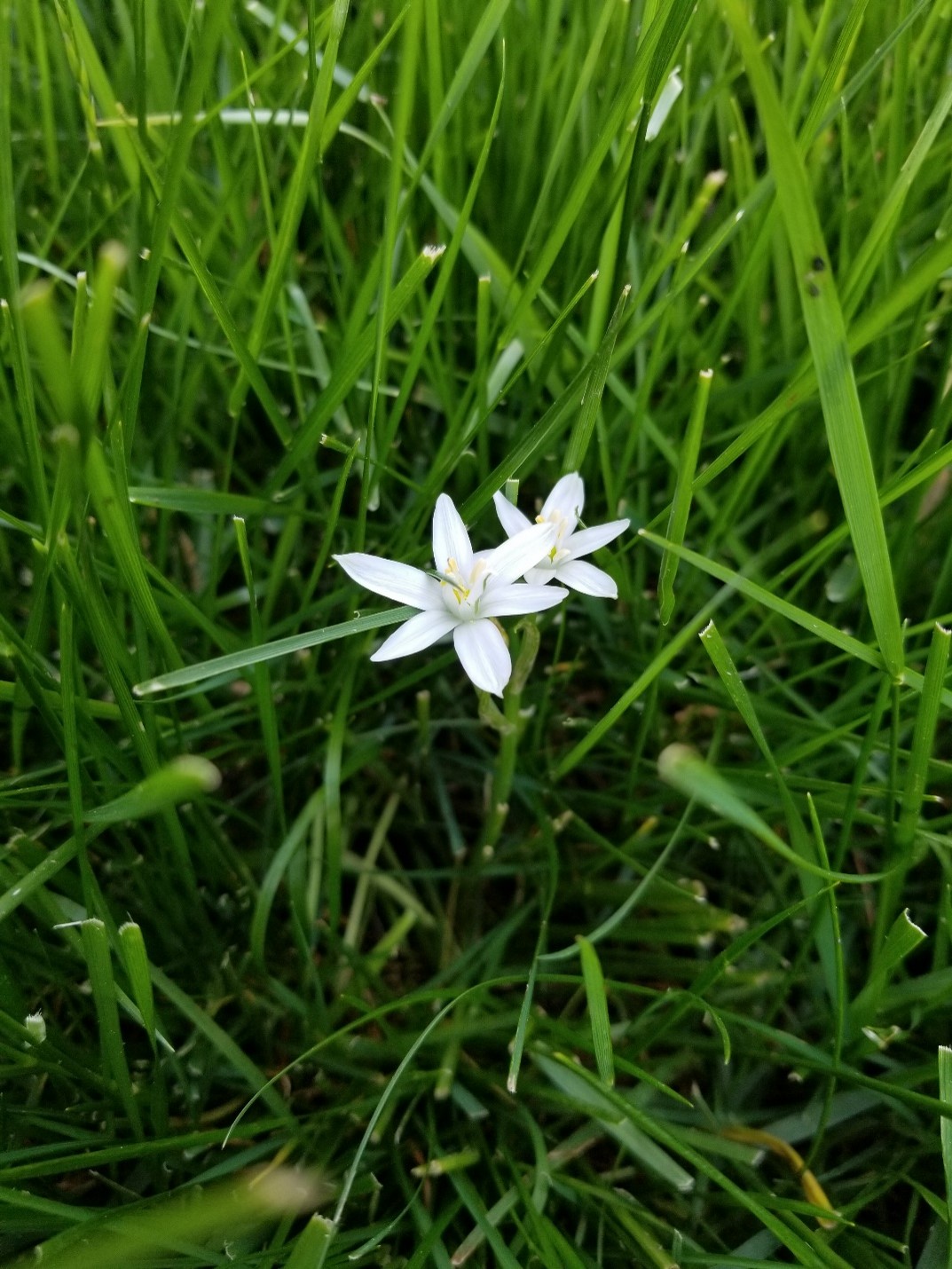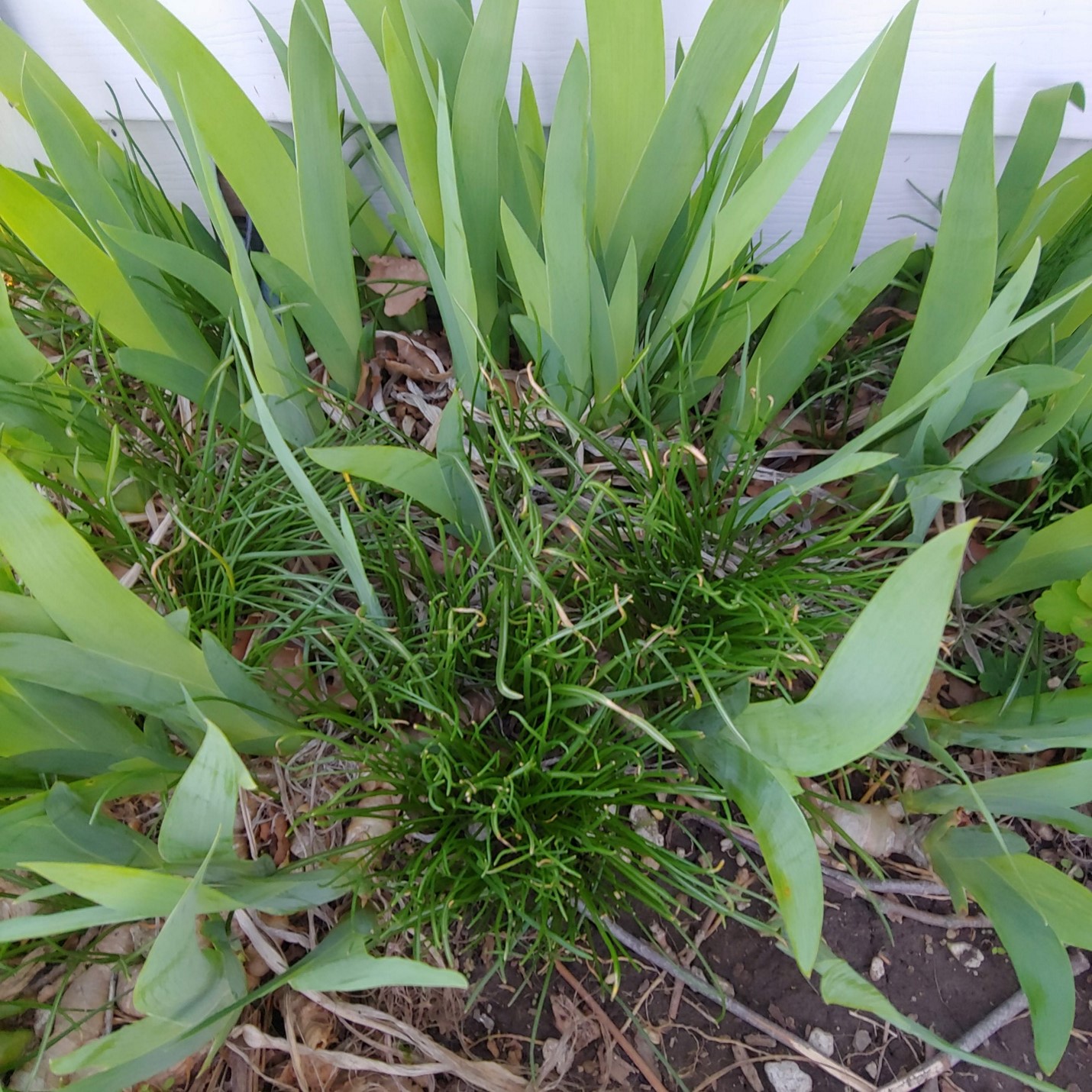Issue 1, April 28, 2022
Controlling Star-of-Bethlehem
Star-of-Bethlehem, Ornithogalum umbellatum, can be a pretty flower in the right place. Unfortunately, it can be a prolific spreader and a few plants can turn into several plants within a few years. Plants can appear at random as tall clumps in a lawn or landscape bed. They can even form a dense groundcover that will out-compete native or other vegetation. Once you have determined that they must be controlled, how do you do that? We’ll cover the basics here.

Star-of-Bethlehem clump growing in a lawn, Michelle Wiesbrook, University of Illinois.
This native of Europe can be found statewide in Illinois as it escaped cultivation long ago. It often finds itself in situations where it’s not wanted, thus making this pretty, little, flowered plant a weed (sometimes and in certain states it’s referred to as “invasive” which is the worst type of weed to be). Personally, I have let a few plants grow in a patch of iris behind the garage as the flowers are attractive, but I also now recognize that was perhaps a mistake as its spread has been much greater than anticipated. Perhaps you have been in a similar situation.
The flowers on this cool-season perennial herb last only about 2 weeks; they are often open for only part of the day giving this plant the interesting nicknames of “nap-at-noon” and “sleepy dick”. Flowers are typically bright, waxy, and white yet occasionally bluish. They are present April through June on branched, open clusters that can reach to about 12 inches high. They consist of 6 petals with a characteristic green stripe on the underside. The flower-stalks are leafless. The leaves look very similar to that of crocus but typically, the growth will be much denser with Star-of-Bethlehem. The leaves are grass-like, very narrow, smooth, succulent, and pale to dark green with a whitish grooved midrib. Newer leaves may not have developed the white midrib yet. Seed pods are produced in mid to late spring. Following this, plants die back to the ground. Reproduction is primarily by numerous bulblets that develop surrounding the parent bulb.

Star-of-Bethlehem flowers, Sarah Hughson, University of Illinois.
To its detriment, Star-of-Bethlehem grows as dense tufts or clumps in lawns and landscapes which can be undesirable by some. Its early growing season has aided in its ability to escape cultivation. It’s there and then it’s gone once the summer heat arrives. All parts of the plant are poisonous if ingested. Unfortunately, it is commonly confused with Allium species such as wild garlic and wild onion, both of which produce an oniony smell when crushed which is not present with Star-of-Bethlehem. Control tactics are similar for these species. For lawns, herbicide applications should be made in early spring when temperatures are at least 50 degrees. In the fall, make another application. In fact, complete control will likely require spring and fall applications for at least 2 consecutive years. If the population is small and you’d rather not use herbicides, you could try to cut plants back early to deplete the energy reserves. Digging up the bulbs may prove to be effective but tillage should be avoided if possible. While tillage can control top growth it will also help to spread bulbs throughout the site.
A few turfgrass herbicide options include sulfentrazone, carfentrazone, or 2,4-D (either alone or in a 3-way product). These postemergent herbicides must be applied to the leaves and these leaves can die back in early summer so proper timing is important. Ester formulations of 2,4-D will likely be more effective than amine formulations. Follow label directions carefully to prevent vapor drift onto off-target, sensitive plants nearby as their new spring growth will be quite susceptible to herbicide injury. Again, sequential applications may be necessary for complete control. Mowing should be delayed following application to give the herbicide time to work. The label should specify the number of days as well as provide guidance on turfgrass tolerance. Read, follow, and understand all label directions. Also, be aware that certain formulations are best left for use by trained professionals so that applications are as safe and effective as possible. Certain product labels may be more complicated and call for specific, required equipment.
The herbicides previously listed are not labeled for use in landscape beds. Spot treatments of the non-selective herbicide, glyphosate, could be tried but only marginal control may result. Physical removal of the bulbs may be the best option in these locations. Do not compost the bulbs. Finally, be vigilant in your efforts as Star-of-Bethlehem can be difficult to completely eradicate from a site.

Star-of-Bethlehem growing in with iris, Michelle Wiesbrook, University of Illinois.
Author:
Michelle Wiesbrook